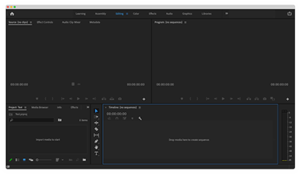40 아리에티스
40 Arietis| 관측 데이터 에폭 J2000 이쿼녹스 J2000 | |
|---|---|
| 별자리 | 양자리 |
| 우측 상승 | 02h 48m 32.08864s[1] |
| 탈위임 | +18° 17′ 01.6491″[1] |
| 겉보기 크기 (V) | 5.82[2] |
| 특성. | |
| 스펙트럼형 | K1 III[3] |
| U-B색지수 | 1.13 |
| B-V색지수 | +1.20[2] |
| R-I 색지수 | 0.44 |
| 변수형 | 의심스러운[4] |
| 아스트로메트리 | |
| 방사 속도 (Rv) | +47.1km[5]/s |
| 고유 운동 (μ) | RA: +41.250[1]mas/yr Dec.: −32.585[1]mas/yr |
| 시차 (π) | 7.3266 ± 0.1215[1] 마스 |
| 거리 | 445 ± 7 리 (102 ± 2 pc) |
| 절대치수 (MV) | 0.09[6] |
| 세부사항[7] | |
| 미사 | 1.60±0.48 M☉ |
| 반지름 | 19.74+0.29 −0.96[1] R☉ |
| 루미도 | 127.98±2.52[1] L☉ |
| 표면 중력 (log g) | 2.09±0.11 cgs |
| 온도 | 4,473±92 K |
| 금속성 [Fe/H] | −0.21±0.05 덱스를 만들다 |
| 나이 | 2.63+1.00 −0.72 Gyr |
| 기타 지정 | |
| 데이터베이스 참조 | |
| 심바드 | 자료 |
40 아리에티스(Arietis)는 양자리 북쪽 별자리에 있을 가능성이 있는 2진법이다[3].40 아리에티스는 플램스티드 명칭이다.이들의 겉보기 크기를 합치면 5.82로 육안 가시성의 한계에 가깝다.[2]연간 시차 변화량 7.33마스를 기준으로 태양으로부터 445광년(136파섹) 떨어져 있다.[1]그 거리에서는 성간 가스와 먼지로 인한 소멸로 인해 그 밝기가 0.21 정도 감소한다.[9]
이것은 두 구성 요소 사이의 각도 분리가 0.2㎛인 것으로 추정되는 분광형 이항이다.[3]눈에 보이는 성분은 K1 III의 별 분류를 가진 진화된 거대 항성이다.[3]미지의 변광성으로 추정되는 별로, 태양 질량의 1.6배에 달하는 26억년 경이다.[4][7]중심부의 수소 공급이 고갈되면서 이 별은 태양 반지름의 20배까지 팽창했다.[1]그것은 4,473 K의 유효 온도에서 부풀어오른 광권으로부터 태양의 128배의 광도를 방출하고 있다.[7]
참조
- ^ a b c d e f g h i Brown, A. G. A.; et al. (Gaia collaboration) (August 2018). "Gaia Data Release 2: Summary of the contents and survey properties". Astronomy & Astrophysics. 616. A1. arXiv:1804.09365. Bibcode:2018A&A...616A...1G. doi:10.1051/0004-6361/201833051.이 소스에 대한 가이아 DR2 기록 VizieR.
- ^ a b c Nicolet, B. (1978), "Photoelectric photometric Catalogue of homogeneous measurements in the UBV System", Astronomy and Astrophysics Supplement Series, 34: 1–49, Bibcode:1978A&AS...34....1N.
- ^ a b c d Eggleton, P. P.; Tokovinin, A. A. (September 2008), "A catalogue of multiplicity among bright stellar systems", Monthly Notices of the Royal Astronomical Society, 389 (2): 869–879, arXiv:0806.2878, Bibcode:2008MNRAS.389..869E, doi:10.1111/j.1365-2966.2008.13596.x, S2CID 14878976.
- ^ a b Samus, N. N.; et al. (2017), "General Catalogue of Variable Stars", Astronomy Reports, 5.1, 61 (1): 80–88, Bibcode:2017ARep...61...80S, doi:10.1134/S1063772917010085, S2CID 125853869.
- ^ Wilson, Ralph Elmer (1953), "General Catalogue of Stellar Radial Velocities", Carnegie Institute Washington D.C. Publication, Washington: Carnegie Institution of Washington, Bibcode:1953GCRV..C......0W.
- ^ Anderson, E.; Francis, Ch. (2012), "XHIP: An extended hipparcos compilation", Astronomy Letters, 38 (5): 331, arXiv:1108.4971, Bibcode:2012AstL...38..331A, doi:10.1134/S1063773712050015, S2CID 119257644.
- ^ a b c Feuillet, Diane K.; et al. (2016), "Determining Ages of APOGEE Giants with Known Distances", The Astrophysical Journal, 817 (1): 40, arXiv:1511.04088, Bibcode:2016ApJ...817...40F, doi:10.3847/0004-637X/817/1/40, S2CID 118675933.
- ^ "40 Ari". SIMBAD. Centre de données astronomiques de Strasbourg. Retrieved 2012-07-18.
- ^ Famaey, B.; et al. (January 2005), "Local kinematics of K and M giants from CORAVEL/Hipparcos/Tycho-2 data. Revisiting the concept of superclusters", Astronomy and Astrophysics, 430 (1): 165–186, arXiv:astro-ph/0409579, Bibcode:2005A&A...430..165F, doi:10.1051/0004-6361:20041272, S2CID 17804304.


